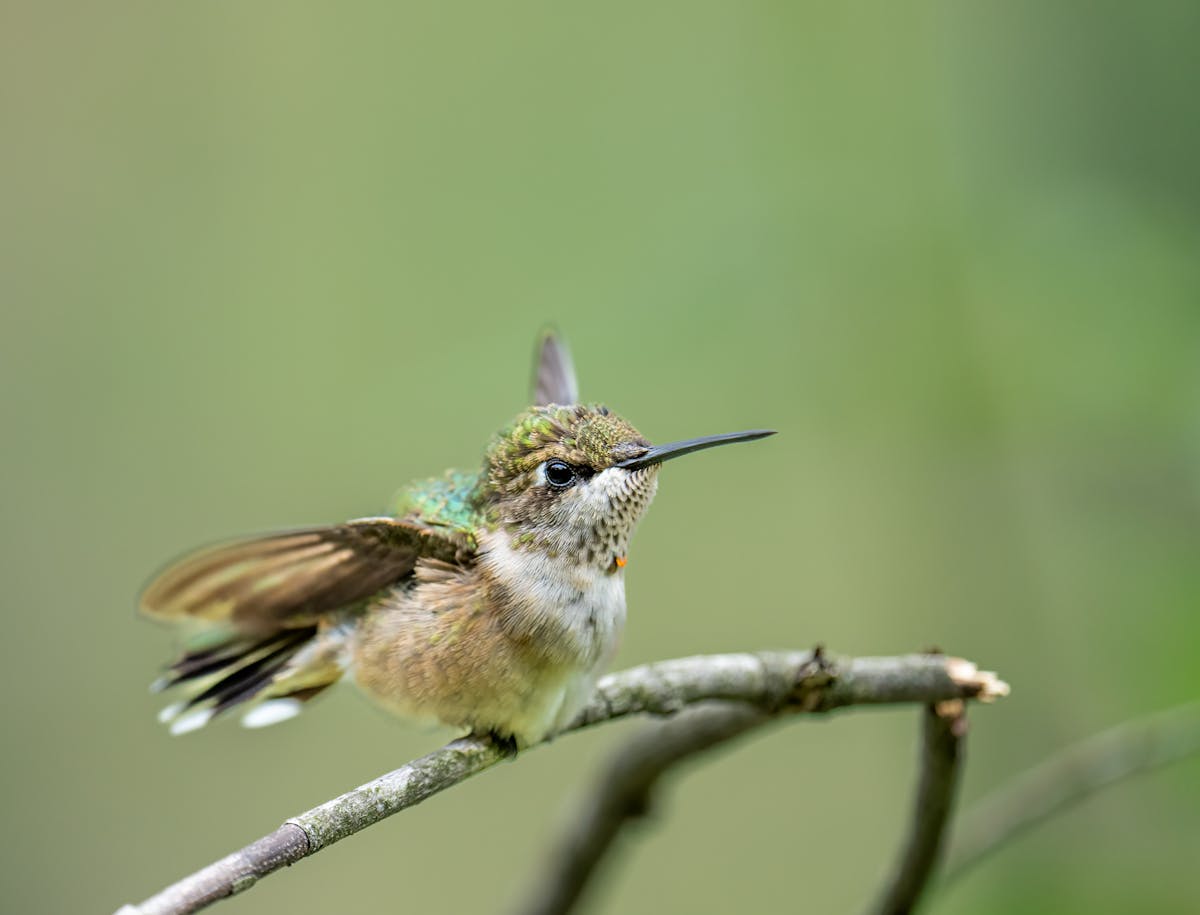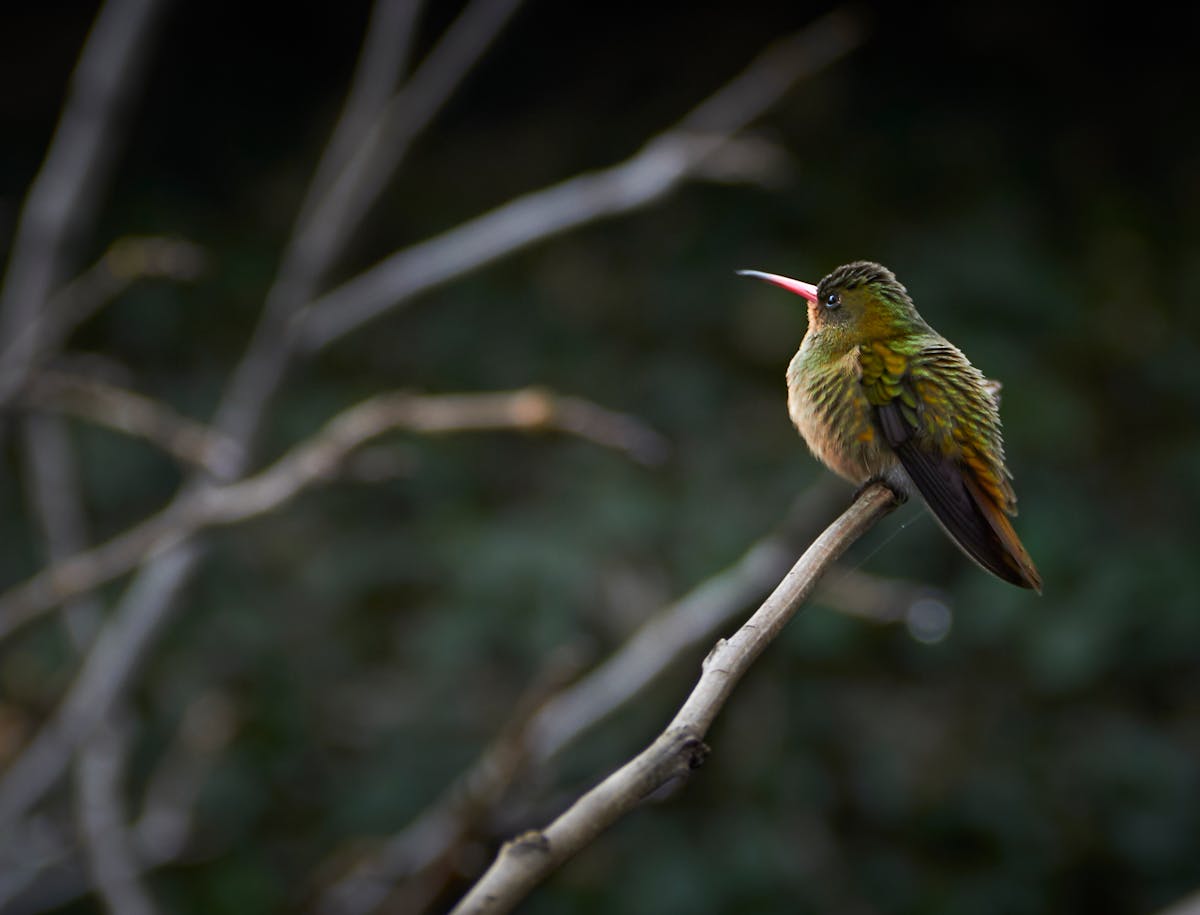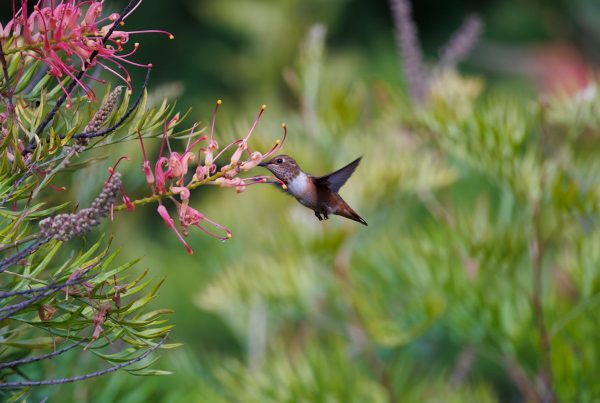
Hummingbird Scouts
If you’re a backyard birder, you may know the meaning of the term “hummingbird scout,” which gets tossed around in spring. It appears on Facebook posts, birding forums and in casual conversations as the season’s first hummingbirds begin cropping up. So what is a hummingbird scout, exactly? Are they real? Do hummingbirds actually send out ahead birds in advance with the rest of flock in tow? Is there even a flock at all?
Let’s do some breaking down with a few quick facts about hummingbird migration, and settle once and for all the great scout debate.
Do hummingbirds actually have scouts?
The short answer: no, at least not in any sort of official or scientific sense. Hummingbirds do not dispatch scouts. They don’t migrate in flocks, they don’t coordinate as a group, and there’s no single bird that flies out front to scout and report back. Every hummingbird makes its migration solo. Scout is more
Ruby-throated hummingbird on branch
We know about this solo migration behavior well. The ruby-throated hummingbird, the species most often spotted in the eastern United States, travels thousands of miles alone, according to the National Audubon Society. That includes a non-stop flight across the Gulf of Mexico.
When someone mentions “scout,” it isn’t necessarily drawing on literal behavior, so don’t overthink it. It is simply a catchy word for morning people, and it has stuck on among birdwatchers as a common, non-scientific term.
Why people call them scouts
They’re called “scouts” because they’re the first arrivals in spring migration. These tend to be adult males, who generally migrate one to two weeks in front of the females. This behavior is tied to their instinctive need to secure feeding territories and the first take on the best habitat before their breeding season starts.
Male Ruby-Throated Hummingbird
And because these early males appear before most of their species and seem to “reconnoiter” feeders and habitat, it’s not hard to see why the term stuck. The label stuck over time, even if it’s not entirely technically correct.
Even the major organizations like Birdzfly don’t have any formal use of the term “scout.” But it’s a harmless, well-established piece of birdwatching slang — and one that’s not going to be abandoned anytime soon.
How does the hummingbird migration work
The migration of hummingbirds is one of the most remarkable phenomena amongst birds. Some species of these diminutive birds can fly up to 500 miles in a single day, and their migration spans from Central America to Canada.
Soon, Ruby-throated hummingbirds begin their migration north as early as February in some southern locations. Males lead, then females and juveniles some time afterward. Migration is caused by internal hormones responding to the lengths of day and night, temperature changes and food availability, not by coordinated planning.
When several birds are on the fly at the same path, they do not go together. There’s no flocking behavior you see with geese or swallows. Each is on its own trajectory; it’s moving at its own tempo. Some will pause and refuel more frequently, like at your feeder en route further north, others may keep going for longer periods based on wind conditions, weather patterns and energy levels.
There’s no leadership or teamwork — no leadership or teamwork involved, no nothing. Each bird seems to be flying blind and by instinct alone.

Hummingbird Scouts
Do the early male “scouts” remain or continue on?
Some of the first males to arrive at your feeders in early spring will linger. Others stop just for the night, bound for breeding grounds farther north. Whether a bird lingers or moves on is up to any number of factors:
Food resources: If there are enough nectar sources and bug populations, a male can settle and defend territory.
Habitat quality: Shelter, nesting opportunity for females and minimal risk of predication all make a location more appealing.
Weather: Late cold snaps or storms could cause birds to keep northwest or retreat south for a short distance.
Territorials: The area is already ruled by another male or males, and intruders will be kicked out (is this even a surprise?
Long story short: some will stop, and some will continue on. You don’t know — at the moment when you see them — which is which. That unpredictability is part of the thrill of spring migration.
Should you put out feeders early?
Ruby throated hummingbird in my backyard
Absolutely. One of the best things you can do to help those migrating hummingbirds is put out your feeders a week or two before your region’s average arrival date. Those early guys — yep, the “scouts” — require easy access to food after their long trip.
If you’re not certain when to expect them in your own region, consult this article, which provides detailed estimates of when hummingbirds are on their way to each U.S. state.
All you need is a 4:1 water-to-sugar nectar solution. No dye, no additives. Make sure you clean your feeders every few days to keep the nectar fresh and safe.
So what is a scout, really?
To me… and to most backyard birders, a “scout” is merely a euphemism for the first hummingbirds (males) of the season. It’s not a formal term, and we’re not saying these birds were duly elected by their fellow birds to proceed and then report back.
It’s a tradition. It’s birdwatcher shorthand. It gives a bit of drama and suspense to something we look forward to all winter long. And let’s face it… “I saw the first hummingbird scout! just reads more fun than “The first territorial male ruby-throated hummingbird has shown up here and may or may not continue moving northward.”
So although the term might not be official, or mean what you think it means, if someone wants to use the word “scout,” let ’em. It is not a hill to die on.” It’s that time of year again: Our favorite little birds are back. The feeders are up. Let people enjoy it.










